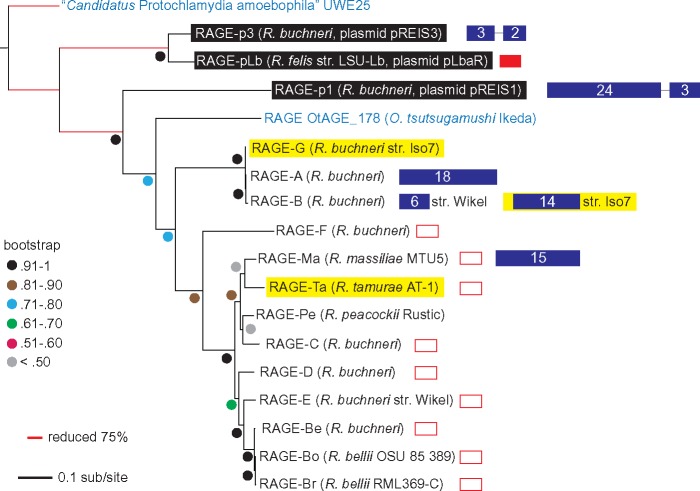Fig. 3.
—RAGEs from disparate rickettsial lineages show close phylogenetic relationships. Phylogenetic placement of RAGEs newly described or characterized in the current study (highlighted in yellow) along with previously described intact RAGEs (Gillespie et al. 2015). The rickettsial lineage for each RAGE is shown in parentheses. Plasmid-borne RAGEs are highlighted in black, and multigene inserts indicated as blue rectangles. RAGEs that contain a toxin of T-AT system gene within their T4SS are denoted with an open red rectangle. The presence of an unknown (DUF1016) gene in place of the toxin in the RAGE-pLb T-4SS is indicated by a filled red rectangle. Phylogeny was inferred using maximum likelihood (see text for details) and support values are based on 1,000 pseudoreplications.

